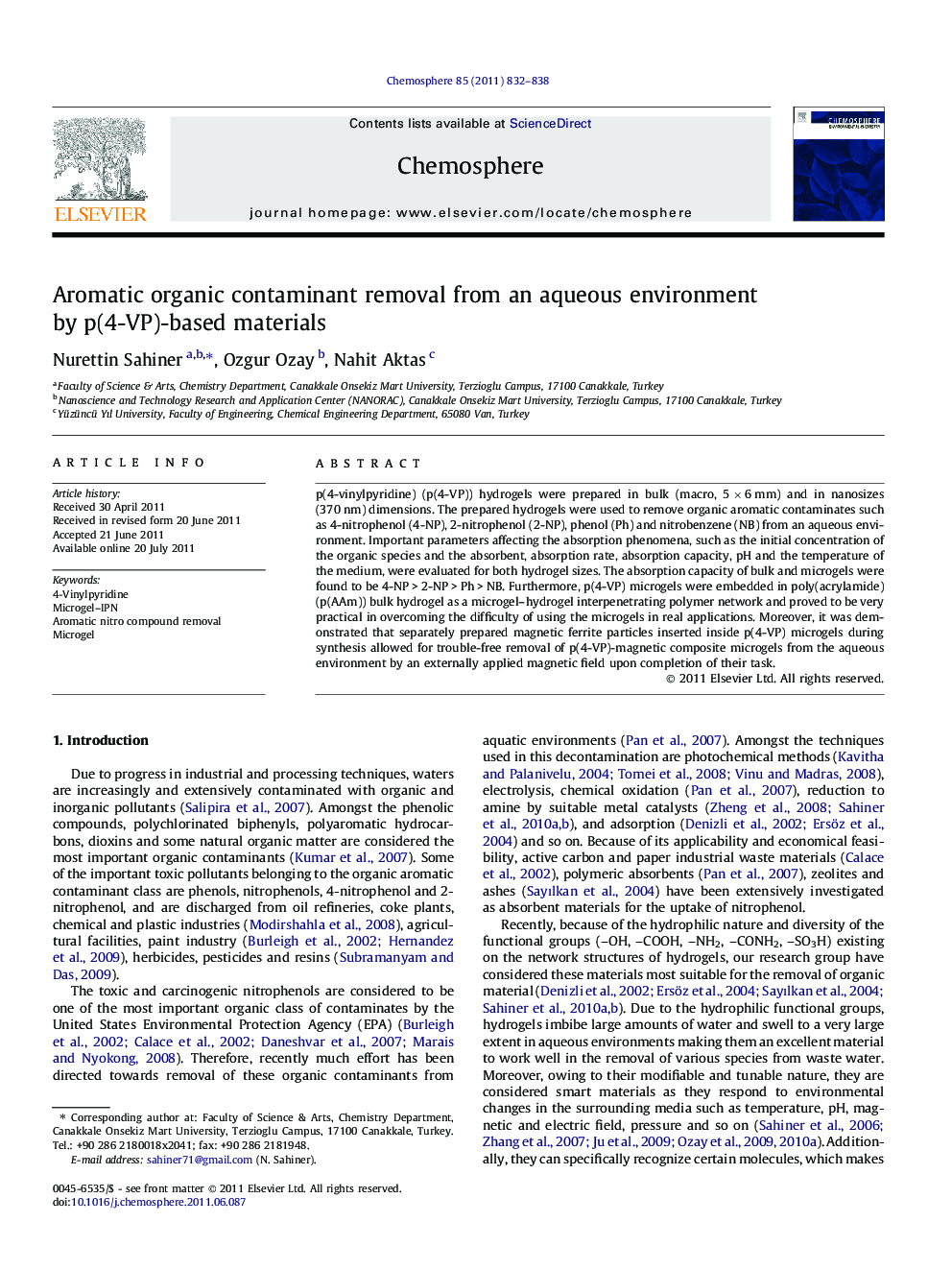| Article ID | Journal | Published Year | Pages | File Type |
|---|---|---|---|---|
| 4410355 | Chemosphere | 2011 | 7 Pages |
p(4-vinylpyridine) (p(4-VP)) hydrogels were prepared in bulk (macro, 5 × 6 mm) and in nanosizes (370 nm) dimensions. The prepared hydrogels were used to remove organic aromatic contaminates such as 4-nitrophenol (4-NP), 2-nitrophenol (2-NP), phenol (Ph) and nitrobenzene (NB) from an aqueous environment. Important parameters affecting the absorption phenomena, such as the initial concentration of the organic species and the absorbent, absorption rate, absorption capacity, pH and the temperature of the medium, were evaluated for both hydrogel sizes. The absorption capacity of bulk and microgels were found to be 4-NP > 2-NP > Ph > NB. Furthermore, p(4-VP) microgels were embedded in poly(acrylamide) (p(AAm)) bulk hydrogel as a microgel–hydrogel interpenetrating polymer network and proved to be very practical in overcoming the difficulty of using the microgels in real applications. Moreover, it was demonstrated that separately prepared magnetic ferrite particles inserted inside p(4-VP) microgels during synthesis allowed for trouble-free removal of p(4-VP)-magnetic composite microgels from the aqueous environment by an externally applied magnetic field upon completion of their task.
Graphical abstractMagnetic field responsive (a) bulk, and (b) nanoparticle composite in the removal phenol and nitrobenzene from aqueous solutions.Figure optionsDownload full-size imageDownload as PowerPoint slideHighlights► Aromatic contaminant removal by smart macro and nanosized p(4-VP) based materials. ► Interpenetrating polymeric networks (IPN) for hazardous organic material elimination. ► Magnetic field sensitive p(4-VP) composite particles for organic toxic pollutants recovery.
